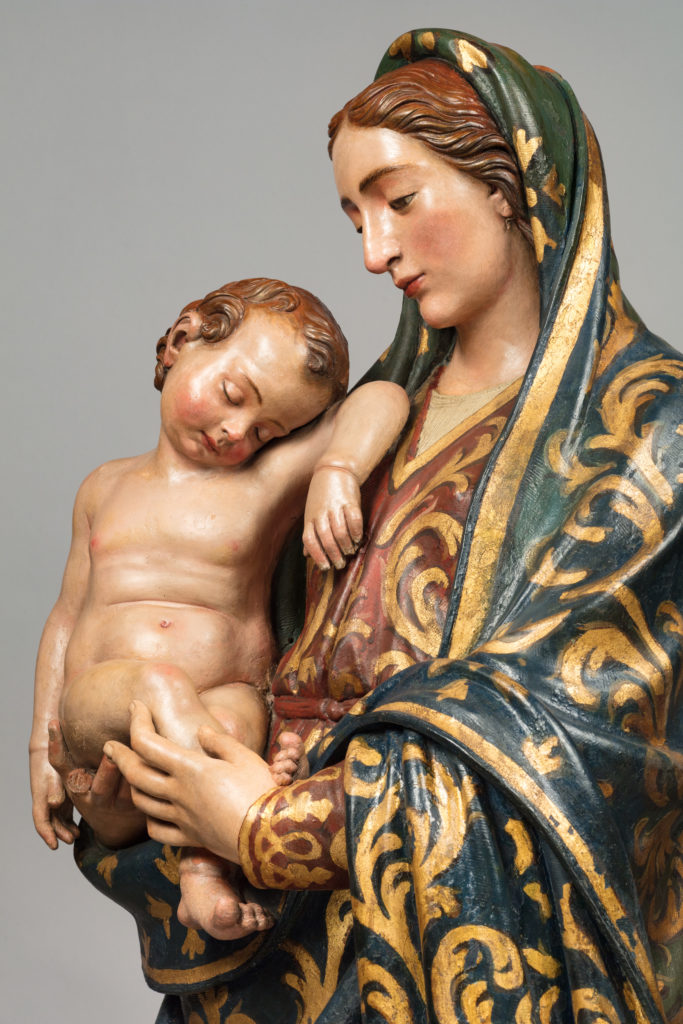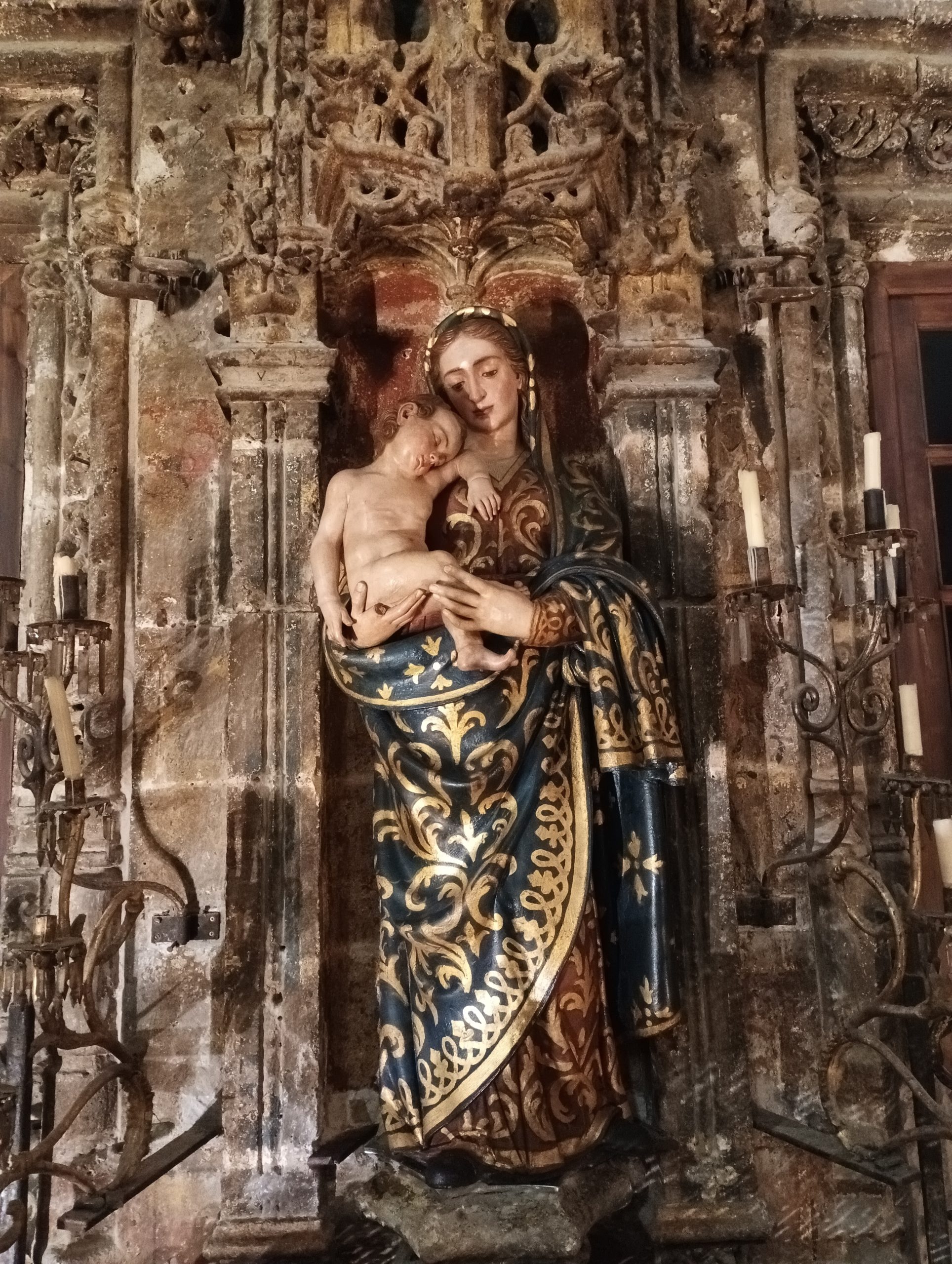This treasure from 16th century imagery was crafted in fired clay with polychrome has now found its niche. The piece was moved to the Museo de Bellas Artes (the Fine Arts Museum) on the occasion of the exhibition “RENAISSANCE ART IN SEVILLE” celebrated from 1 December, 2022 to 12 March, 2023.
Before its display, the work received a conservation treatment from Museum technicians as remuneration for its inclusion in and contribution to the exhibition. These cleaning and reinforcement projects were undertaken over the course of approximately a month. Thanks to this operation, aspects such as the halting of some fairly advanced damages were improved, and a reversible holder was built, adapted to the needs of the piece being held.
Since its arrival at the Museum eight months ago up until yesterday evening, this beautiful “Madonna” with Child has been able to be seen from close up in the Cathedral’s San Francisco Chapel, which remains open during cultural visiting hours, allowing congregants and visitors to admire the extraordinary sweetness conveyed by this image, which is so revered by Sevillians.
THE WORK
According to Profesor Hernández Díaz: This extremely interesting madonna (153 cm.) is attributed to French Master Miguel Perrin, approx. 1540. It is made of fired clay, and its polychrome is clearly not the original.
The sweetness of the Virgin’s face, inclined toward the Child, is tender, completed by the Child who is asleep on the right shoulder of his Mother. The Virgin’s hands hold the Child, who sleeps sweetly on the Virgin’s chest. The whole image is a singular beauty, depicting the maternal nurturing of Mary.
Perhaps the fired clay from which this sculpture was made, is the most accessible medium to express such a tender scene. There are other figures in the Cathedral made from the same materials that are also marvels in expressing the same tenderness between Christ and the Virgin.
The fact that this image of the Virgin stands out among all the images that surround it could be due to the allure it generates in those who venerate it. The expression of the Virgin with her Child in her arms is one of the most frequent found in 17th century Sevillian Sculpture.


